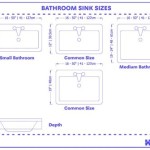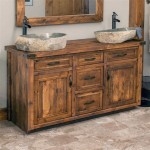How to Seal a Marble Bathroom Countertop
Marble countertops, prized for their elegance and unique veining, are a popular choice for bathrooms. However, marble is a porous stone, making it susceptible to stains, etching, and water damage. Regularly sealing a marble bathroom countertop is crucial to preserving its beauty and extending its lifespan. This process involves applying a protective barrier that repels liquids and prevents them from penetrating the surface, minimizing the risk of damage from spills, toiletries, and everyday use. The efficacy of the sealing process relies on proper surface preparation, selecting the appropriate sealant, and applying it according to the manufacturer's instructions. Neglecting to seal marble countertops can lead to costly repairs or replacement, ultimately making regular maintenance a worthwhile investment.
Understanding the Importance of Sealing Marble
Marble's porous nature means it readily absorbs liquids. This absorption can lead to several problems. Stains from makeup, hair dye, soap, hard water, and other common bathroom substances can penetrate the stone, becoming extremely difficult, if not impossible, to remove. Etching, a dulling of the surface caused by acidic substances like vinegar, lemon juice, or even some cleaning products, is another significant concern. Water damage, including water rings and general discoloration, can also occur if water is allowed to sit on the surface for extended periods. Sealing marble creates a protective barrier that prevents these substances from being absorbed into the stone. This barrier effectively repels liquids, giving the user time to wipe up spills before they can cause damage. Moreover, sealing helps maintain the marble's natural luster and vibrancy, preserving its aesthetic appeal for years to come. A properly sealed countertop is easier to clean and requires less aggressive cleaning methods, further contributing to its longevity. In essence, sealing marble is a form of preventative maintenance that safeguards the investment and prevents costly damage in the long run.
The frequency of sealing depends on several factors, including the type of sealant used, the level of use the countertop receives, and the type of products used in the bathroom. Generally, marble countertops should be sealed every 6-12 months. A simple water test can determine whether resealing is necessary. Pour a small amount of water onto the countertop and observe how it behaves. If the water beads up on the surface, the sealant is still effective. If the water darkens the stone or is absorbed quickly, it's time to reseal. It is important to also consider that areas around the sink and faucet are exposed to more water and may require more frequent sealing. A log of when the countertop was sealed previously can also be helpful.
Preparing the Marble Surface for Sealing
Proper preparation is paramount to achieving a successful seal. Start by thoroughly cleaning the marble countertop to remove any dirt, grime, soap scum, or existing stains. Use a pH-neutral cleaner specifically designed for natural stone. Avoid using abrasive cleaners, such as scouring pads or harsh chemicals, as these can scratch or damage the marble. The cleaning process should involve using a soft cloth or sponge to apply the cleaner, followed by rinsing the surface thoroughly with clean water. Ensure that all residue from the cleaner is removed. After cleaning, allow the countertop to dry completely. This may take several hours, depending on the humidity and temperature. A completely dry surface is essential for the sealant to properly penetrate and bond with the stone. Any moisture present will interfere with the sealant's effectiveness and can lead to a cloudy or uneven finish. To expedite the drying process, a clean, dry cloth can be used to absorb excess water after rinsing. Once the countertop is dry to the touch, it's advisable to wait an additional hour or two to ensure that all moisture has evaporated from within the stone's pores. This step, while seemingly time-consuming, is crucial for achieving optimal sealant performance and long-lasting protection.
Once the countertop is clean and dry, inspect it for any existing stains or damage. If stains are present, attempt to remove them before sealing. Various stain removal products specifically formulated for marble are available. Follow the product instructions carefully and test the product in an inconspicuous area first to ensure it doesn't damage the marble. Similarly, if there are any chips or cracks, these should be repaired prior to sealing. A marble repair kit can be used to fill in these imperfections. After applying the repair compound, allow it to dry and cure completely according to the kit's instructions. Once the repair is cured, carefully sand it smooth to blend it seamlessly with the surrounding surface. Removing stains and repairing damage before sealing will ensure that the sealant provides a uniform and effective barrier across the entire countertop surface.
Applying the Marble Sealer Correctly
Selecting the right sealant is crucial for achieving optimal protection. Penetrating sealers, also known as impregnating sealers, are generally recommended for marble countertops. These sealers penetrate the surface of the stone and create a hydrophobic barrier within the pores, repelling liquids without altering the stone's appearance or breathability. Film-forming sealers, which create a coating on the surface, are generally not recommended for marble as they can trap moisture and lead to discoloration and other problems. When choosing a sealant, read the product label carefully and ensure that it is specifically designed for use on natural stone and is appropriate for bathroom environments where it will be exposed to water and various toiletries. Consider sealants with added stain resistance properties for enhanced protection against common bathroom spills. A good quality sealer can contribute greatly to the longevity of the countertop.
Before applying the sealant, protect surrounding areas, such as the sink, backsplash, and walls, with painter's tape or plastic sheeting. This will prevent the sealant from accidentally getting onto these surfaces. Open the sealant container and read the manufacturer's instructions thoroughly. Some sealants require shaking or stirring before use. Applying the sealant is a straightforward process that begins with pouring a small amount of sealant onto the marble surface. Use a clean, soft cloth, sponge, or paint pad to evenly spread the sealant across the entire countertop. Work in small sections, ensuring that every area is adequately covered. Avoid applying too much sealant at once, as this can lead to a sticky or uneven finish. If the sealant has a strong odor, ensure that the bathroom is well-ventilated by opening windows or using a fan. After applying the first coat, allow it to penetrate the stone for the recommended time, typically 5-10 minutes. The manufacturer's instructions will specify the appropriate dwell time for the specific sealant being used. During this time, the sealant will be absorbed into the marble's pores, creating the protective barrier.
After the recommended dwell time, wipe off any excess sealant from the surface with a clean, dry cloth. This is important to prevent the sealant from drying on the surface and creating a hazy or sticky residue. Use a clean cloth for each section to ensure that the excess sealant is completely removed. For optimal protection, apply a second coat of sealant following the same procedure as the first coat. Again, allow the sealant to penetrate for the recommended time and then wipe off any excess. Once the final coat has been applied and the excess has been removed, allow the sealant to cure completely. The curing time can vary depending on the sealant and the environmental conditions, but it typically takes 24-72 hours. During this time, avoid using the countertop and keep it dry. Do not place any items on the surface, as this can interfere with the curing process. Once the sealant is fully cured, the marble countertop will be protected from stains, etching, and water damage, maintaining its beauty and elegance for years to come.

How To Treat Seal Granite And Marble Countertops Lesher

How To Seal Marble Counters Eagle Stones Granite

How To Choose A Marble Countertop Sealer Diy Guide

How To Seal Vanity Top Storables

Learn How A Stone Sealing Service In Chicago Red The Elegant Beauty Of This Marble Countertop

How To Seal Granite Marble Polish Brass A Stroll Thru Life

Best Ways To Look After Your New Marble Bathroom

How To Treat Seal Granite And Marble Countertops Lesher

How To Seal Marble Countertops Granite Dude

Residential Stone Countertop Sealing Sir Grout Of The Lowcountry
Related Posts







